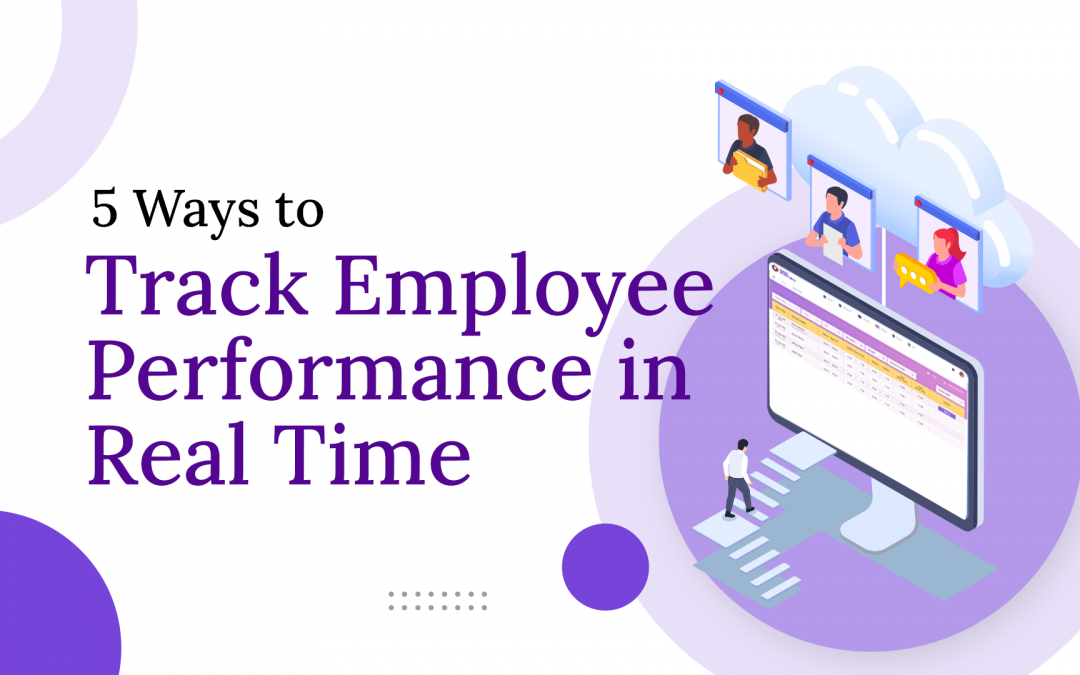Accountability is the first step towards continuous improvement at the organizational level. It starts with delegating responsibilities to different resources based on their skills and expertise. The best way to promote accountability is to regularly monitor employees’ performance and make quick decisions.
However, as an HR manager or team lead, you already have a lot on your plate. And if your team size exceeds more than 50, it becomes impossible for you to monitor each staff member individually and track performance. To address this issue, companies use workforce management tools that provide managers with real-time insights and help them make informed decisions. This way, you check employee performance and identify areas that need further improvement.
This article discusses 5 proven ways to track employee performance and make quick decisions in real-time to achieve your desired organizational goals.
So, let’s dive in!
Why Real-time Performance Tracking is Essential?
Real-time employee performance tracking ensures employees are meeting performance expectations and contributing to the overall success of an organization. It allows managers to provide immediate feedback and identify areas where they can improve and make adjustments to their work accordingly.
Moreover, real-time performance tracking is essential to recognize employees’ training needs. Managers can ensure that their workers have the necessary skills and knowledge to perform their jobs effectively.
Similarly, when employees know that their performance is being monitored in real time, they are more likely to stay focused and motivated. This can lead to increased productivity and improved overall performance.
5 Ways to Track Employee Performance
Given below are 5 proven ways that can help managers track their employee performance in real time:
1. Set SMART Goals and Clear Expectations
Before you initiate the performance evaluation process, you need to define employee performance in your organizational context. As an employer, set SMART goals related to staff productivity and make a timeline to achieve short-term and long-term objectives.
For instance, you can set a goal to improve the attendance rate at your organization by 50% in the next three months. Similarly, you can assume that each employee will learn 5 new skills by the next quarter.
Based on these goals, set clear expectations for each of your team members. Never forget to keep reviewing the progress on these milestones regularly to meet your desired goals before the deadline. Most importantly, support your employees at each stage and empower them to make decisions for better results.
2. Communicate with Your Staff
Once you have set your projected goals and expectations for upcoming months, the next step is to communicate these outlooks with your staff. You can never achieve these goals until you tell each of your team members about your expectations.
Research shows that making employees aware of their responsibilities and projected goals is an effective means of monitoring performance. With well-defined guidelines in place, it becomes straightforward to identify those who may be falling behind.
Hence, it is your responsibility as an employer to ensure that your team members have a clear understanding of what is expected of them on each project or task.
3. Use Monitoring and Time Tracking Software
For years, companies have relied on traditional methods to track employee performance manually. With time, these methods have become outdated and eventually impractical, particularly for remote teams working at different schedules.
So, the ideal solution to ensure real-time employee performance tracking is to use cloud-based workforce management software. These fully automated monitoring and time-tracking systems are designed to improve operational efficiency and increase team productivity.
With these tools, you can track the time spent by your employees against assigned tasks and access GPS location history. Besides, managers can get real-time insights into team performances and make data-driven decisions to accomplish the set milestones.
4. Organize Performance-review Meetings
Another best way to track employee performance in real time is to organize performance review meetings regularly. These meetings allow staff members to get feedback from their managers and understand their strengths and weaknesses. Team leads can share which areas need further improvement and offer the necessary support.
Similarly, performance review meetings can also be used as an opportunity to recognize and reward employees for their achievements and contributions to the company. This recognition can boost employee morale and motivation which eventually leads to higher growth.
In terms of professional development, performance review meetings can be used to provide staff with training and development opportunities to help them grow and develop in their roles. Managers can even hold employees accountable for their performance and make data-driven decisions.
5. Increase Self-monitoring
Self-monitoring is the process of observing and tracking one’s behavior and performance. When employees engage in self-monitoring, they are more likely to be aware of their strengths and weaknesses and take proactive steps to improve their performance.
Moreover, self-monitoring provides more accurate performance data that helps managers set realistic goals for their teams. It also workers them to take ownership of their performance which leads to greater motivation to perform well and achieve their goals.
Lastly, self-monitoring can encourage employees to take proactive steps to improve their performance. This can include seeking out training and development opportunities or taking on new responsibilities to gain new skills. This leads to more effective communication and problem-solving.
Wrapping Up
Tracking employee performance in real-time is the best way to analyze how team members are working and make quick decisions for better results. Managers can share feedback to make adjustments to team performance and improve their work immediately.
Besides, an accurate assessment of an employee’s performance leads to more effective feedback and goal-setting. The process allows for continuous improvement as workers can quickly identify areas where they need to improve and take immediate steps to address them.
For real-time performance tracking, managers should first set SMART goals, communicate expectations with their team members, and support their staff. Besides, they should use cloud-based workforce management tools and regularly organize performance-review meetings. Finally, self-monitoring should be encouraged at all organizational levels to promote self-accountability.
